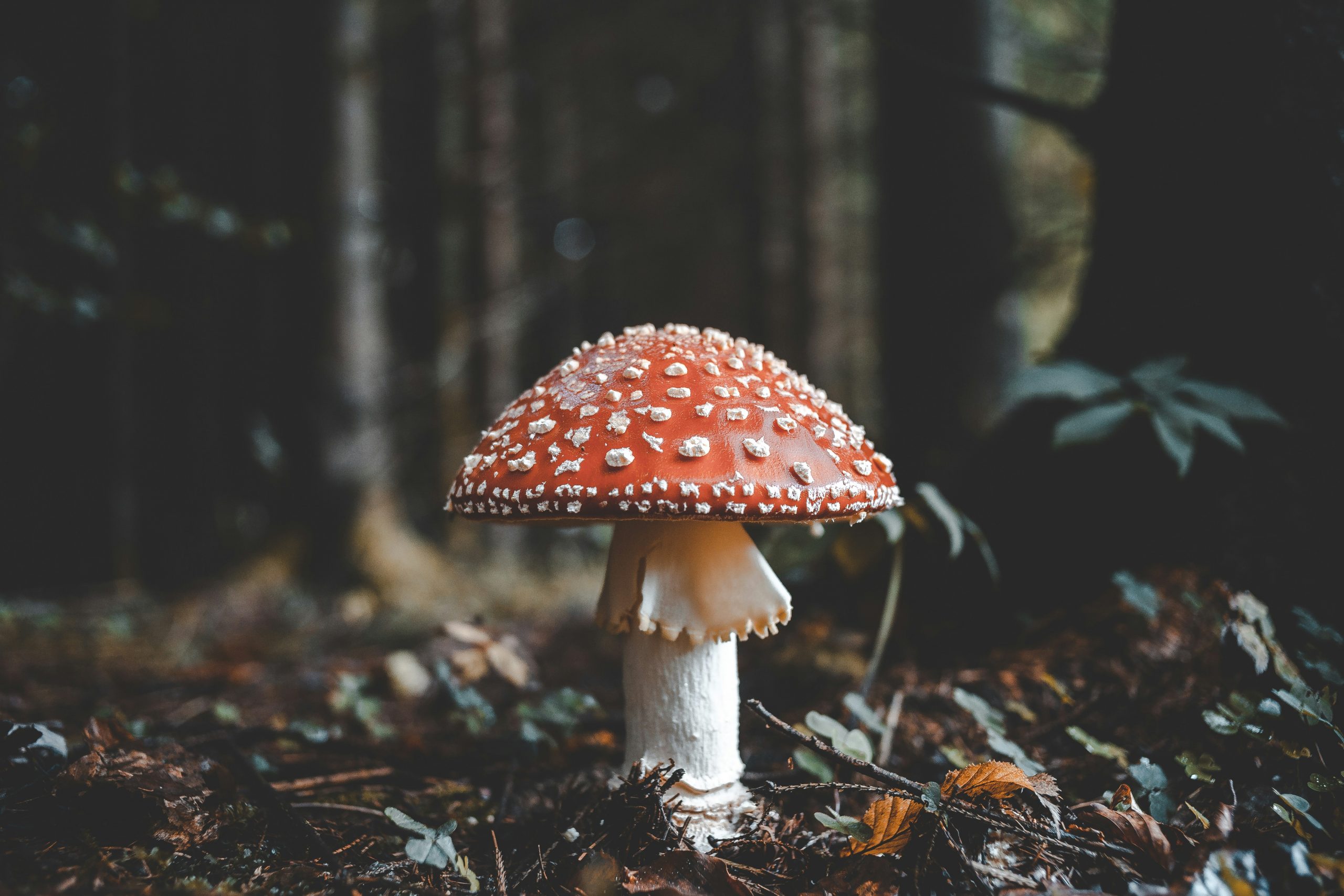Foraging for food in the wilderness can be an exciting and rewarding experience, but when it comes to wild mushrooms, extreme caution is necessary. While some wild mushrooms are edible and even considered delicacies, many species are toxic, and consuming the wrong ones can lead to serious illness or even death. The dangers associated with foraging for mushrooms without expert knowledge cannot be overstated.
This article explores the reasons why you should never eat wild mushrooms in the woods unless you have expert training, detailing the risks involved, symptoms of mushroom poisoning, and ways to stay safe while enjoying nature.
The Risk of Mushroom Poisoning
Mushrooms, like many plants, have evolved chemical defenses to protect themselves from being eaten. As a result, there are thousands of mushroom species in the wild, and many of them contain toxic compounds that are harmful or fatal when ingested. One of the main dangers of wild mushroom foraging is the difficulty in distinguishing between safe, edible mushrooms and toxic varieties. Even experienced foragers can sometimes have difficulty differentiating between look-alike species.
1. Identifying Toxic Mushrooms is Difficult
There are more than 10,000 species of known mushrooms, and while many are harmless, there are hundreds of species that are toxic to humans. The problem is that some toxic mushrooms closely resemble edible species, making identification by amateurs extremely risky. For example, the death cap mushroom (Amanita phalloides) and the destroying angel (Amanita bisporigera) are two of the deadliest mushrooms in the world, and they can easily be mistaken for edible varieties like the paddy straw mushroom or other species in the same family.
These toxic look-alikes can grow in the same regions and habitats as their edible counterparts, making it incredibly challenging for someone without extensive knowledge of mushroom taxonomy to differentiate between them. Consuming even a small amount of certain toxic mushrooms can lead to severe poisoning.
2. Toxic Mushrooms Contain Dangerous Compounds
Wild mushrooms contain a wide range of toxins, many of which target specific organs in the body, such as the liver, kidneys, and nervous system. These toxins can vary widely in their effects, from causing mild digestive upset to irreversible organ damage and death. Some of the most dangerous compounds found in toxic mushrooms include:
- Amatoxins: Found in species like the death cap and destroying angel, amatoxins are among the most lethal mushroom toxins. They block the production of RNA polymerase, an enzyme essential for cell function. This leads to liver and kidney failure, often resulting in death if not treated promptly.
- Gyromitrin: Present in false morel mushrooms, gyromitrin breaks down into monomethylhydrazine (MMH), a chemical that damages the liver and central nervous system.
- Orellanine: Found in certain species of Cortinarius mushrooms, orellanine causes delayed kidney failure, with symptoms often appearing days or even weeks after ingestion.
- Muscarine: This toxin affects the parasympathetic nervous system, leading to symptoms like excessive salivation, sweating, vomiting, and difficulty breathing.
Even small amounts of these toxins can cause life-threatening symptoms. The effects of mushroom poisoning can be delayed, making it difficult to recognize the danger immediately after consumption.
3. Delayed Symptoms Can Be Deadly
One of the most dangerous aspects of wild mushroom poisoning is that symptoms often don’t appear immediately. In some cases, it can take hours, or even days, for signs of poisoning to manifest. This delayed onset makes it difficult for individuals to connect their symptoms to mushroom consumption and may prevent them from seeking timely medical attention.
For example, symptoms of poisoning from mushrooms containing amatoxins, such as the death cap, typically begin with gastrointestinal distress (nausea, vomiting, diarrhea) 6 to 12 hours after ingestion. These symptoms may then disappear for a period, leading the individual to believe they are recovering. However, during this time, the toxins continue to damage the liver and kidneys, and by the time more serious symptoms—such as jaundice, confusion, and organ failure—appear, it may be too late for effective treatment.
In many cases, the only treatment for severe mushroom poisoning is a liver transplant, underscoring the life-threatening nature of eating the wrong mushroom.
Common Poisonous Mushrooms to Avoid
While there are many species of poisonous mushrooms, some are particularly notorious for causing severe illness or death. Here are a few of the most dangerous species:
1. Death Cap (Amanita phalloides)
The death cap is responsible for the majority of fatal mushroom poisonings worldwide. It is found throughout Europe, North America, and other regions. This mushroom contains amatoxins, which cause irreversible liver and kidney damage. The death cap looks similar to some edible mushrooms, making it particularly dangerous for foragers.
2. Destroying Angel (Amanita bisporigera)
The destroying angel is another member of the Amanita family and is just as deadly as the death cap. Found primarily in North America, this mushroom is pure white and often mistaken for harmless mushrooms like puffballs. It, too, contains amatoxins that lead to liver failure.
3. False Morels (Gyromitra esculenta)
False morels are a common cause of mushroom poisoning, especially among foragers who mistake them for true morels (a highly prized edible mushroom). False morels contain gyromitrin, which breaks down into a toxic compound that affects the liver and central nervous system. Symptoms of false morel poisoning include nausea, vomiting, seizures, and, in severe cases, coma or death.
4. Jack O’Lantern Mushrooms (Omphalotus olearius)
Jack O’Lantern mushrooms are bright orange and resemble chanterelles, an edible species. While not typically fatal, consuming Jack O’Lantern mushrooms can cause severe stomach cramps, vomiting, and diarrhea. The toxins in these mushrooms can cause significant gastrointestinal distress, leading to dehydration and other complications.
5. Cortinarius Species (Cortinarius orellanus)
Certain species in the Cortinarius genus, such as Cortinarius orellanus, contain orellanine, a toxin that causes kidney failure. The onset of symptoms can be delayed by days or even weeks, making it difficult to trace the poisoning back to mushroom consumption.
Symptoms of Mushroom Poisoning
The symptoms of mushroom poisoning vary depending on the type of mushroom consumed and the specific toxins involved. However, common symptoms include:
- Nausea and vomiting: One of the earliest signs of mushroom poisoning is gastrointestinal distress, including nausea, vomiting, and diarrhea. This is often the body’s initial response to ingesting toxins.
- Abdominal pain: Stomach pain or cramps may occur as the toxins affect the digestive system.
- Excessive sweating and salivation: Mushrooms containing muscarine may cause an increase in sweating, drooling, and tear production.
- Confusion and dizziness: As the toxins affect the central nervous system, individuals may experience confusion, dizziness, hallucinations, or seizures.
- Jaundice: Yellowing of the skin and eyes may occur if the liver is affected by amatoxins.
- Difficulty breathing: Some toxins can cause respiratory distress, leading to shortness of breath or difficulty breathing.
- Kidney failure: Mushrooms containing orellanine can cause kidney damage, leading to a decrease in urine output, swelling in the legs or abdomen, and other signs of kidney failure.
If you suspect you or someone else has consumed a poisonous mushroom, it is crucial to seek immediate medical attention. Bring a sample of the mushroom (if possible) to assist healthcare providers in identifying the toxin and providing appropriate treatment.
What to Do If You Ingest a Poisonous Mushroom
If you suspect that you or someone else has eaten a toxic mushroom, take the following steps:
- Seek Immediate Medical Attention: Contact poison control or go to the nearest emergency room as soon as possible. Time is critical, and early treatment can be lifesaving.
- Do Not Induce Vomiting: Unless instructed by a medical professional, do not attempt to induce vomiting. This can cause more harm and may complicate treatment.
- Bring a Sample: If possible, collect a sample of the mushroom you consumed and bring it to the hospital. This can help doctors identify the type of mushroom and determine the appropriate treatment.
- Monitor for Symptoms: Even if you don’t feel sick right away, symptoms of mushroom poisoning can be delayed. Continue monitoring for signs of poisoning and seek medical help at the first sign of illness.
How to Stay Safe While Foraging
Foraging for wild mushrooms can be a rewarding hobby, but it’s essential to follow safety guidelines to avoid the dangers of mushroom poisoning.
1. Learn from Experts
If you’re interested in foraging for mushrooms, it’s important to learn from experienced mycologists (mushroom experts) or join a mushroom identification group. Proper education is key to safely identifying edible mushrooms and avoiding toxic varieties.
2. Use Field Guides
When foraging, always carry a reliable mushroom identification guide specific to your region. These guides often include detailed descriptions and photos to help differentiate between edible and poisonous species.
3. Avoid Eating Wild Mushrooms Unless 100% Certain
If you have any doubt about a mushroom’s identity, do not eat it. Even experienced foragers sometimes make mistakes, and the risk is simply not worth it.
4. Know the Look-Alikes
Familiarize yourself with the most dangerous look-alike species, such as the death cap and destroying angel. Understanding these high-risk mushrooms can help you
avoid deadly mistakes.
5. Forage Responsibly
Be mindful of your environment and follow local regulations regarding mushroom foraging. Some areas have restrictions on harvesting wild mushrooms to protect the ecosystem and prevent overharvesting.
Conclusion
While the idea of foraging for wild mushrooms in the woods may seem appealing, the risks associated with eating unidentified mushrooms are far too great. Many wild mushrooms are toxic, and some contain deadly compounds that can lead to serious illness or death. The challenge of correctly identifying mushrooms, combined with the delayed onset of poisoning symptoms, makes it extremely dangerous for amateurs to consume wild mushrooms without expert knowledge.
For your safety, it is always best to avoid eating wild mushrooms unless you are certain of their identity and have extensive training in mushroom identification. If you suspect that you or someone else has ingested a poisonous mushroom, seek immediate medical attention to minimize the risk of serious harm.




